
MAY 2014
Creator's Bookmarks Publication
Creator's Bookmarks Publication
PWFERRETTO Interview, including: Office desk, Work Portfolio and top 10 websites



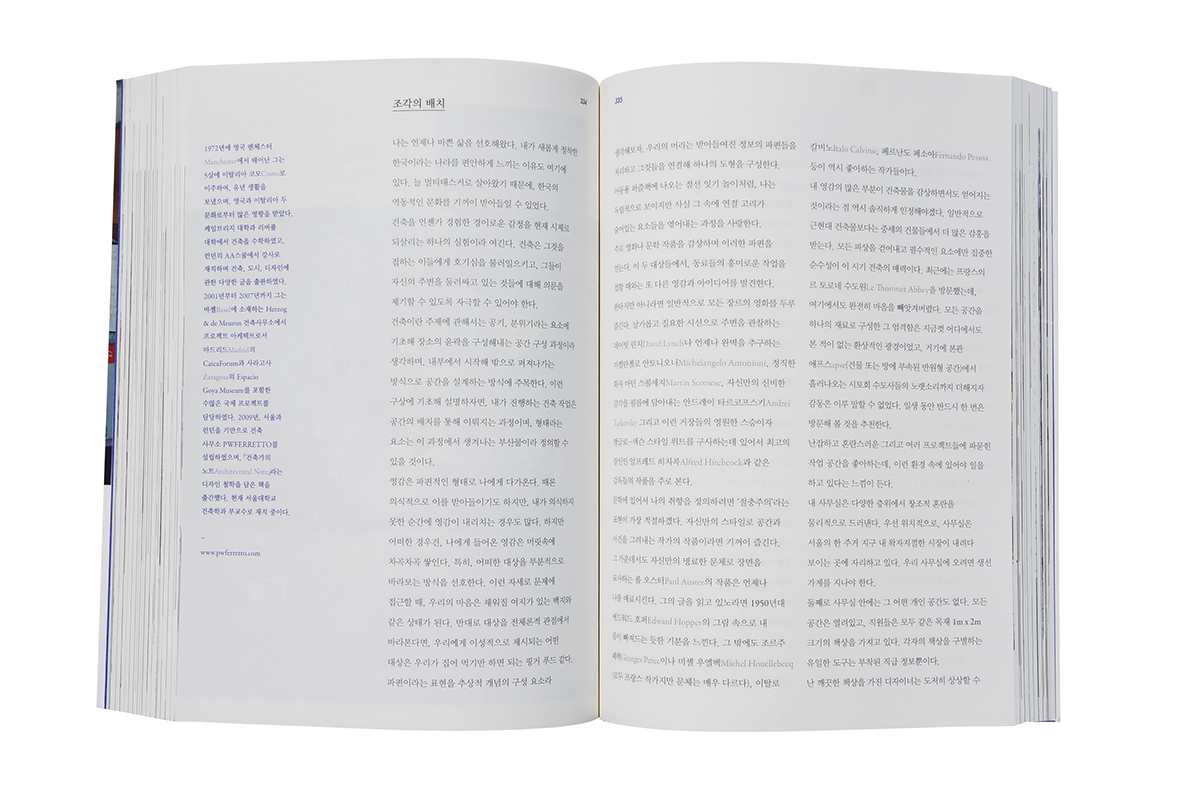
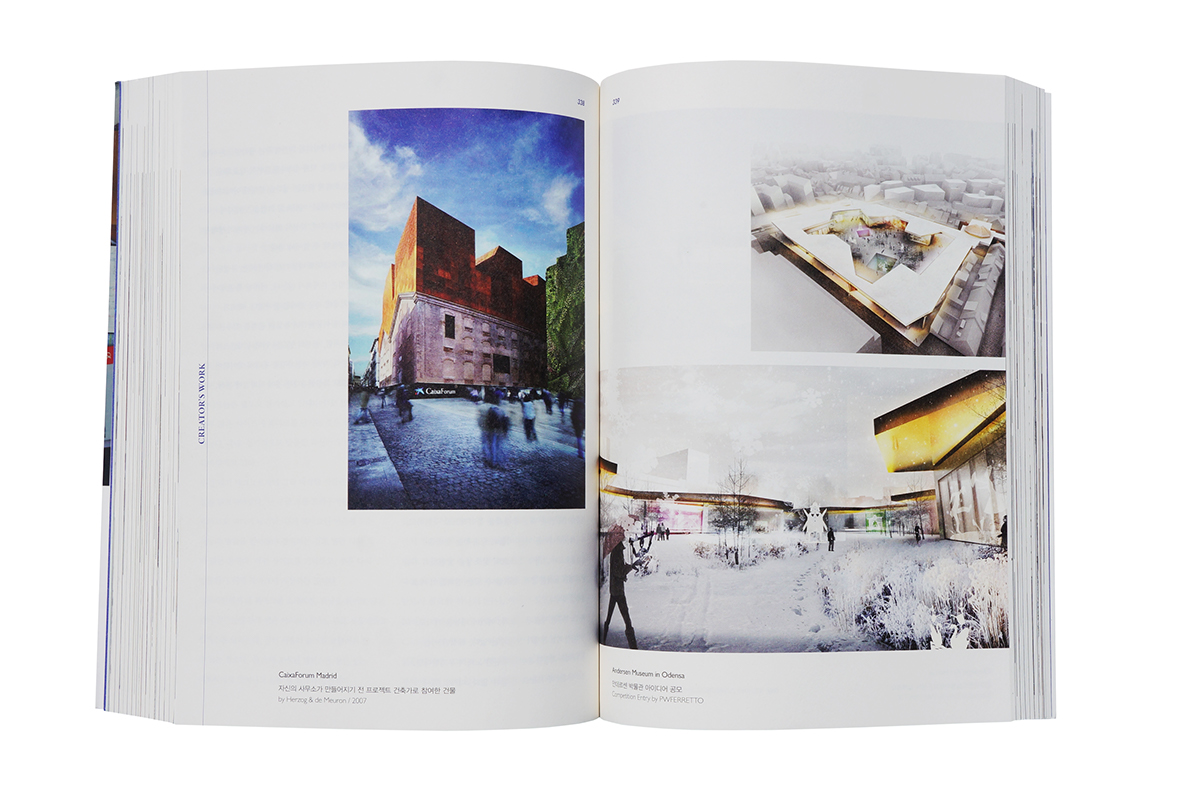
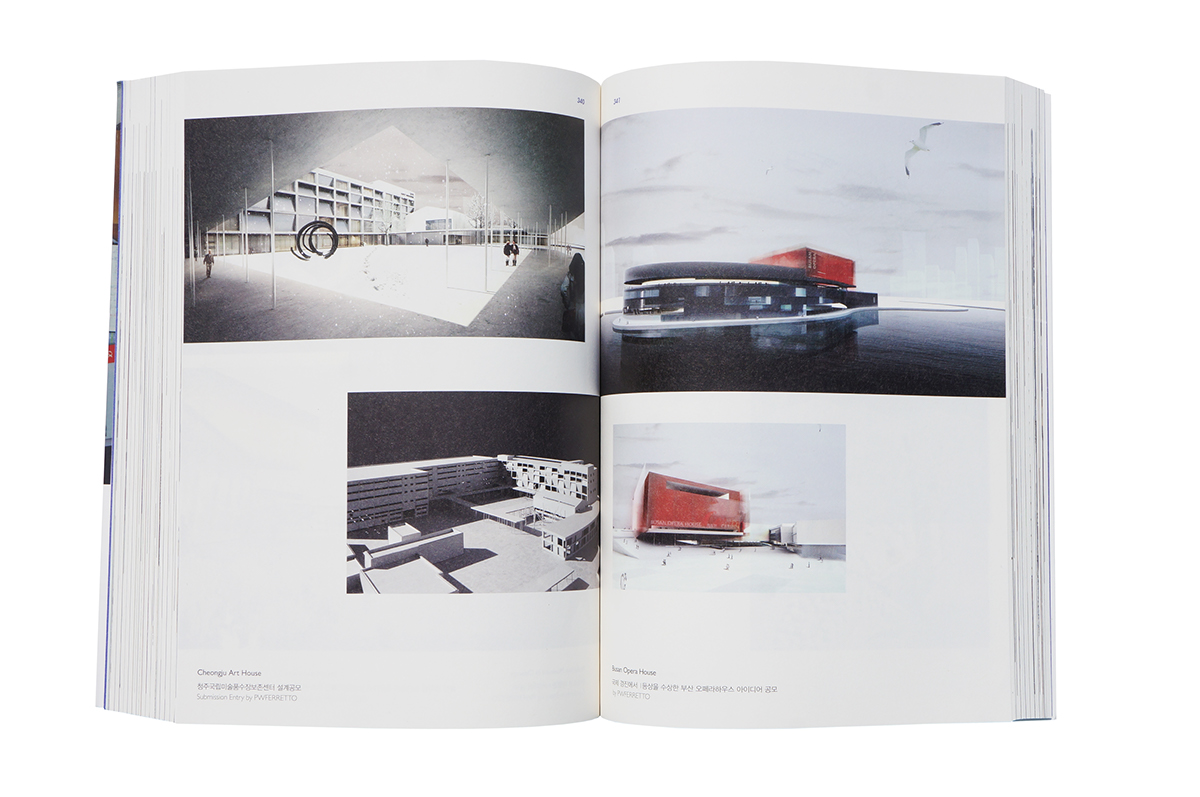
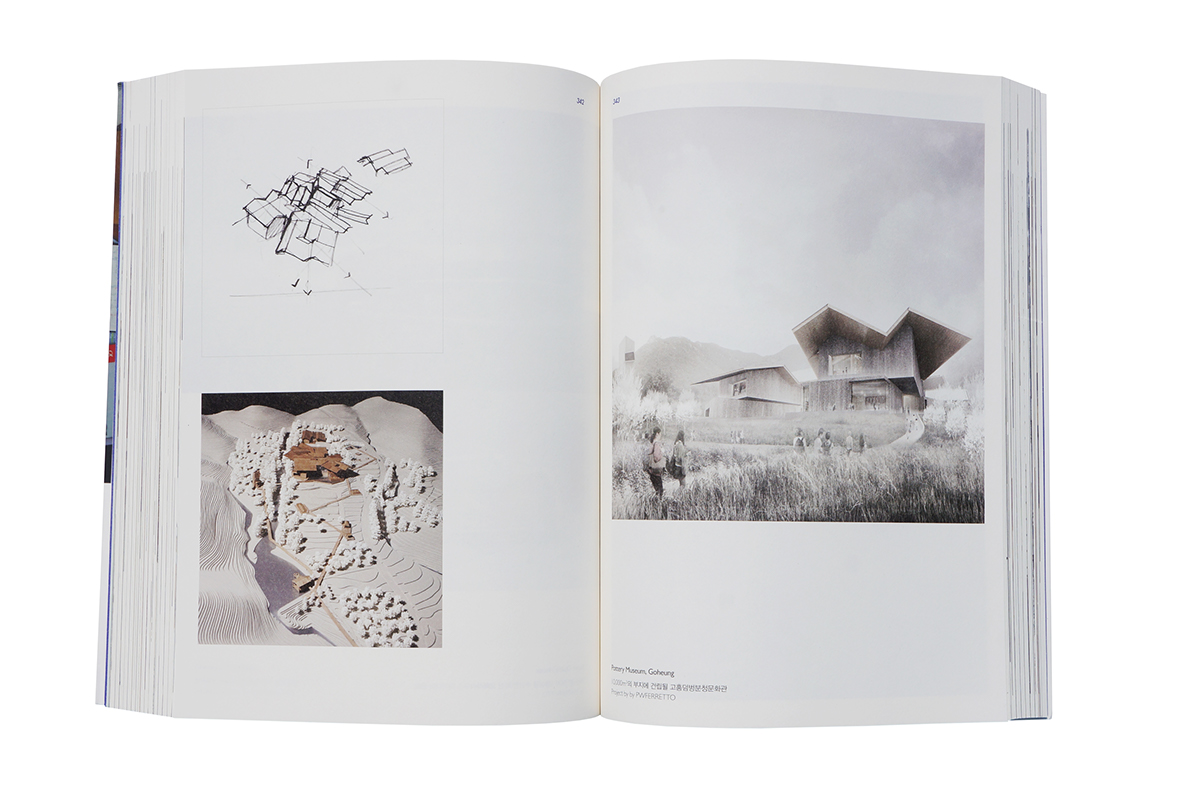
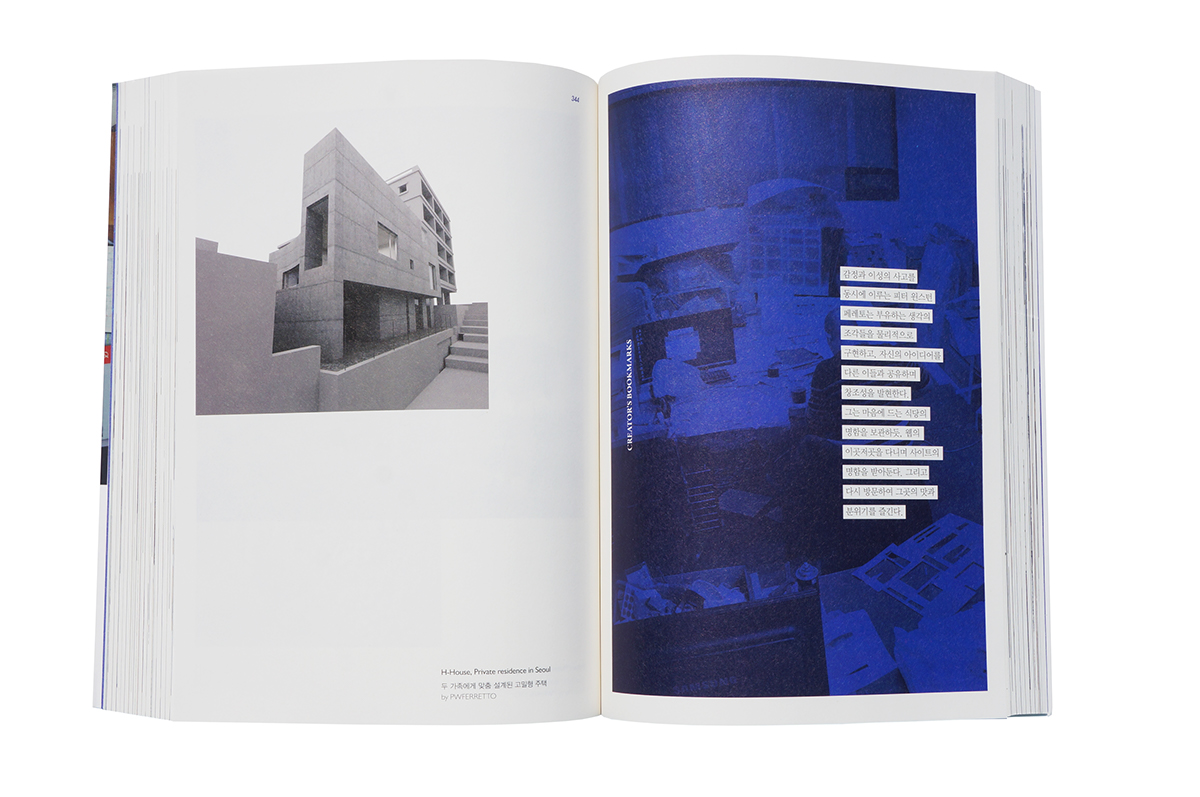

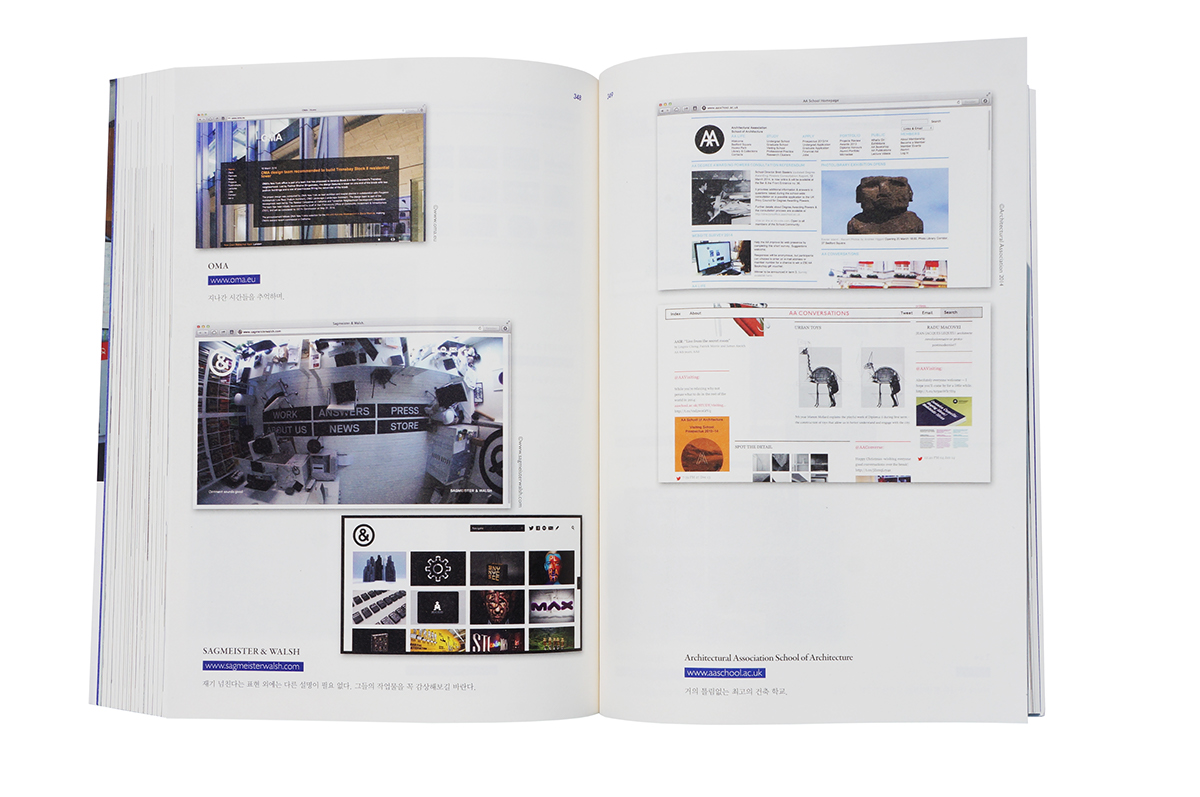
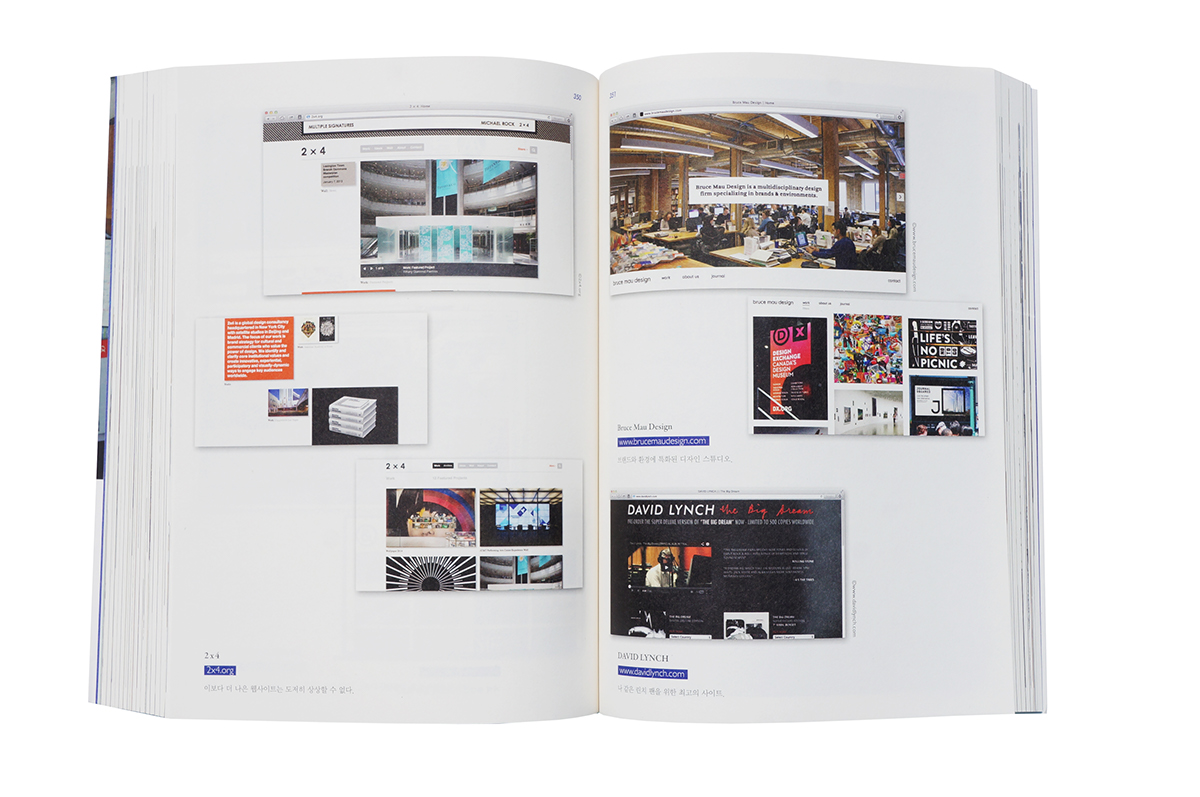
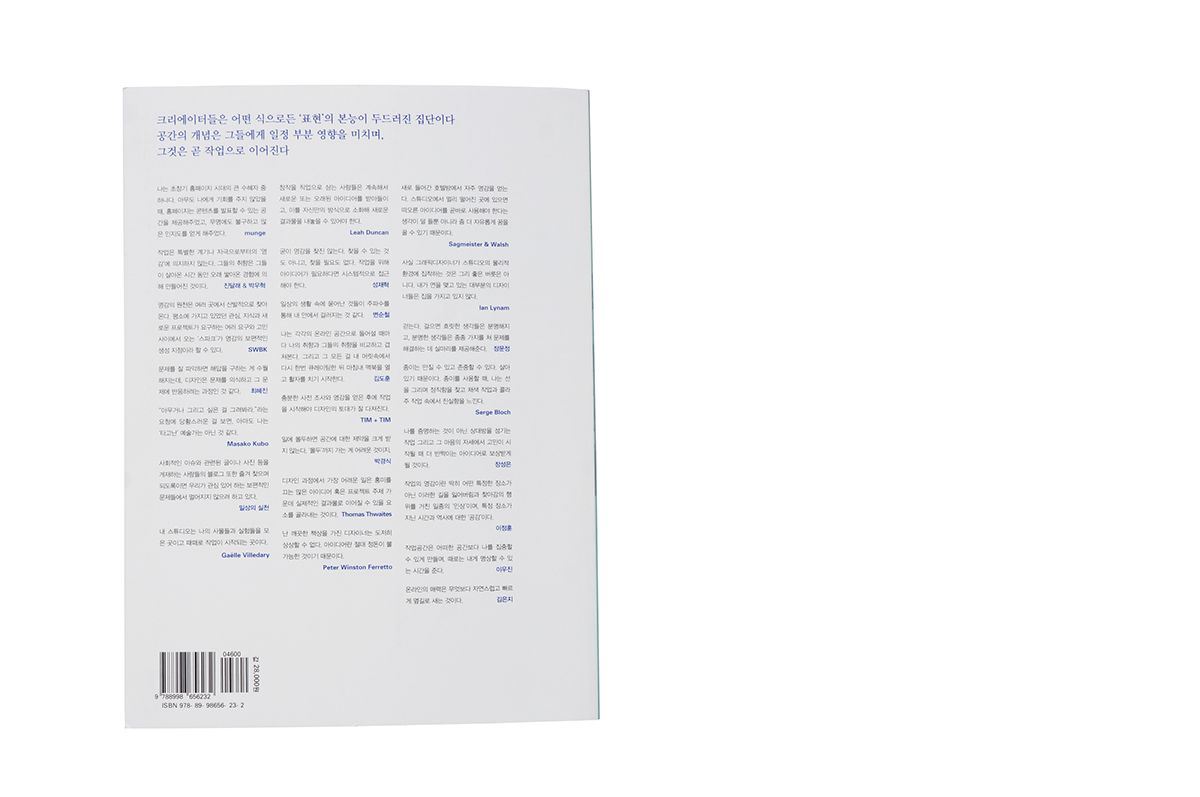
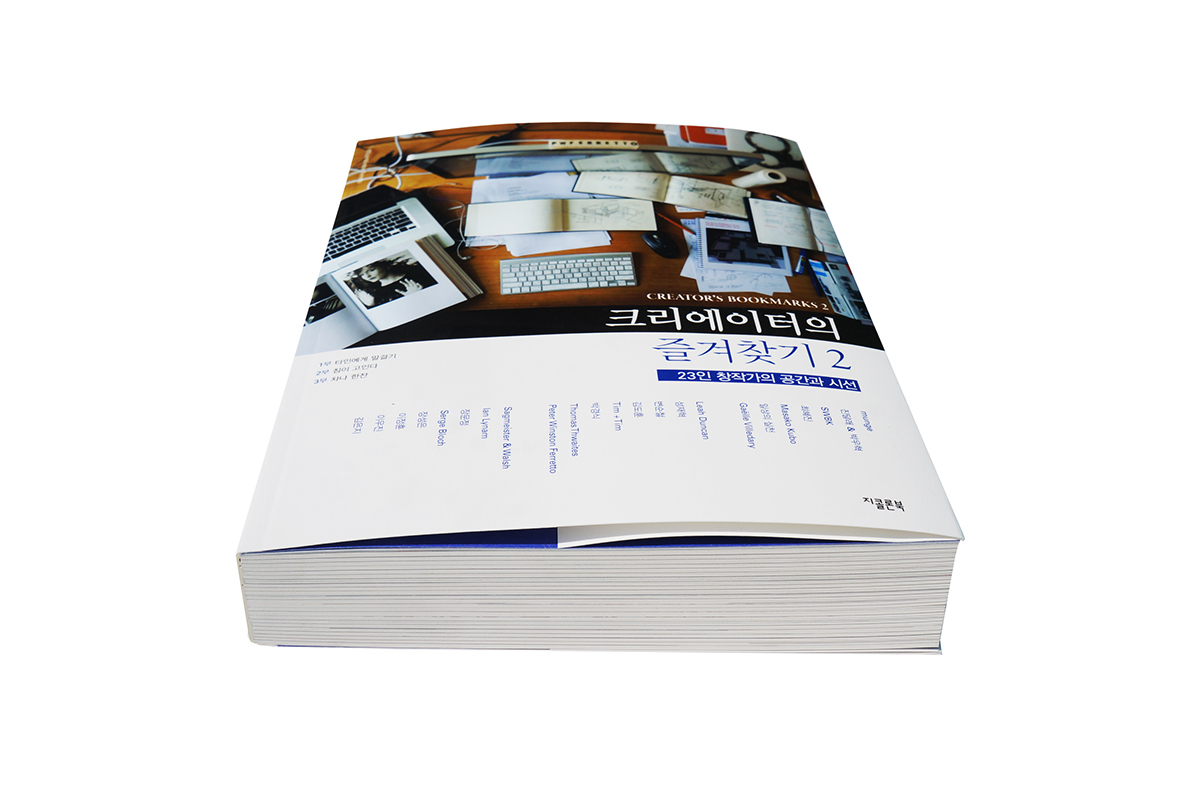
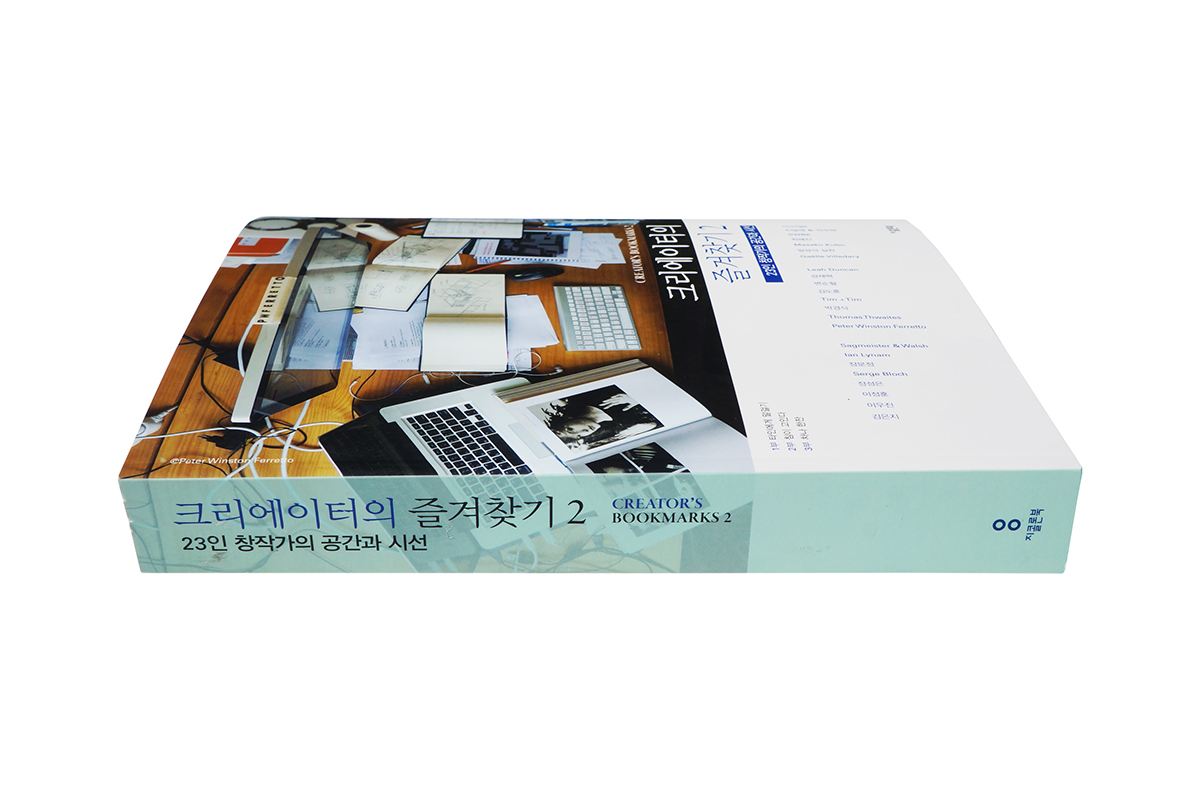
English Text
A_ PLEASE INTRODUCES YOURSELF FOR KOREAN READERS.
I am an Architect, Designer and Educator, who believes life should be lived passionately. Passion equates to immersing yourself, whole heartedly, into what you do: in my case Architecture.
I was born in 1972, in Manchester, UK. At the age of five I moved to Como, Italy where I lived until I left home to go to university at the age of 18. Having a dual nationality is a key component of my identity, feeling strong attachments to both cultures (English/Italian) but not belonging to either.
I studied architecture at the University of Cambridge and the University of Liverpool, in the UK. I have taught Architectural Design at the Architectural Association in London and in 2009 was appointed Professor of Architecture at Seoul National University.
I worked for Herzog & de Meuron Architects in Basel, Switzerland as the project architect responsible for numerous international projects including CaixaForum Madrid and Espacio Goya Museum in Zaragoza and in 2009 I founded PWFERRETTO, an architectural office based in Seoul and London.
My approach to architecture can be explained as an experiment in reawakening a sense of wonder in the present. Architecture should stimulate curiosity, bringing people to question their relationship with their surroundings. I am interested in designing spaces from the inside out and see architecture as a composition of rooms (public and private), where ambience and atmosphere create the spatial configuration of the project. With this concept in mind I generate architecture by arranging rooms where form becomes a by-product of this.
B_ WHAT DO YOU WORK ON THESE DAYS?
I always like to be busy, this is the main reason I feel so at home in my new adopted country of Korea. I embrace the Korean Dynamic Culture (KDC). I am always multi-tasking, where everything I work on becomes a project. The projects can be classified into three categories: Design, Teaching and Writing.
Design:
My office is currently working on several projects including a new Pottery Museum in the southern most point of Korea, close to a city called Goheung. The Museum centres around a series of historic kilns that belonged to the 9th Century AD, creating a synergy between the natural landscape and the materiality of the new building.
We also work on smaller scale projects such as a domestic residence for a private family in the hills west of Seoul, where the building is shaped to respond to the various pressures of the site.
Teach:
When I teach I also treat every Design Studio as a project in its own right, creating a specific brief with its own objectives. At Seoul National University I mostly teach undergraduate design classes where each class focus on a specific topic. Last semester my class was entitled “Casting Space”, where students had to design spaces by casting, i.e. the process of making negative moulds and then forming positive spaces. The results were incredible; fresh, spontaneous and above all very unexpected.
Writing:
Besides designing and teaching I also enjoy writing, I feel it’s the most appropriate medium to distil, filter one’s ideas; to actually ponder on what it is that you are doing, rather than simply being immersed in the doing. In March 2014, I will be publishing a book about my design philosophy called Architectural Notes, published by G-colon.
C. WHERE DO YOU GET THE INSPIRATION FOR YOUR WORKS?
Inspiration comes to me in fragments, sometimes consciously and other times subconsciously, but every time these fragments stay collected in my memory. I am very interested in seeing things in parts, your mind is left to fill in the blanks, compared to when you see things as a whole, i.e. when things are presented rationally, where the message is spoon fed to you, there is no margin of deviation.
Thinking in terms of fragments encourages an element of abstraction; you mind has to process the information and then start to join the dots. I love connecting; connecting dots- like when you are a child and your mother gives you those puzzles where the page is filled with dots and numbers. The sources of my fragments mostly come from cinema and literature, I feel these two disciplines more inspiring and refreshing than always peeping to see what your piers are doing.
Generally I like all genres of films with the exception of fantasy. Directors I regularly watch include: David Lynch for his relentless attention to atmosphere, Michelangelo Antonioni for his pursuit of perfection, Martin Scorsese for the honesty of the dialogue, Andrei Tarkovsky for his sense of the mysterious and many others including the greatest master of them all Alfred Hitchcock simply for his Anglo-Saxon wit.
In literature my tastes are similarly eclectic. I enjoy authors that describe spaces, events in specific styles: Paul Auster always leaves me mesmerized with how articulate he is in depicting a scene, when I read his books I always feel I am immersed into a painting, for example one of those 1950 painting of Edward Hopper. Other authors I enjoy include: George Perec and Michel Houellebecq (both French but very different), Italo Calvino and Fernando Pessoa amongst many others.
I also have to be honest and admit that a lot of my inspiration comes from buildings. But more that modern contemporary Architecture I am attracted to Medieval architecture, where architecture is stripped of all superficiality and taken back to its bare necessity. A building that I recently visited and has completely captivated my attention is the 11th Century Abbey of Le Thonoret in France. Never in my life had I witnessed a space with the same austerity, all created with one material: to listen to the Cistercian monks singing in the main apse is an experience I would recommend to all your readers, at least once in your life time.
D. WHAT DOES YOUR WORKSPACE MEAN TO YOU?
I like my workplace to be messy, to be chaotic, so I can feel the work, be surrounded and immersed by the projects. My office embodies creative confusion on many levels. Firstly the location, situated above a busy local market in a residential area of Seoul, you have to enter passing through a fishmongers stall.
Secondly, inside the office we have no private rooms; the whole office is open plan, where every staff has the same wood table (1.00x2.00m). Each table is covered with strata of information- I am always suspicious of designers with a clean desks, ideas are never organized.
Finally we have the office walls (exclusively painted white) which becomes an extension of the workspace. Ideas, words, sketches, material, photographs are all pinned on to the white walls. Seeing things in all their physicality is different from working on a screen, I need the physical to function.
E. DO YOU HAVE SOME KNOW-HOW FOR SEARCHING FOR BOOKMARK? AND WHAT IS YOUR MAJOR CONCERN?
When I browse the website I have two methods. Firstly are the constant sites, what I call my staple diet of regular sites that I check daily: news updates, general current affairs. Secondly I have the special diet, including one-off treats, sites that are usually linked to my profession.
I am reluctant to bookmark too many sites; I only bookmark a site that I am sure I wish to return to on a regular basis.
F. WHAT ARE YOU THINKING ABOUT THE ACTION “BOOKMARKING (WEBSITES)”AND INTRODUCE YOUR FAVOURITE THINGS IN THE OFFLINE. (ACTION, SPACE, OBJECT ETC,.)
Bookmarking
I must admit I am not very tech savvy; I use Google Chrome as my web-browser and save my bookmarks there. When I bookmark a site I revert to the same process of taking a business card of a good restaurant, it’s a pro-memoria to locate and visit the establishment again.
Favourite Offline
I enjoy running, I job 2 to 3 times every week. I run inside SNU campus, which I consider a hidden treasure of Seoul. A campus set inside a mountain, away from all the humming and buzzing of the metropolis.
I enjoy Gyeongbokgung Palace. I visit regularly, about once a month; I like seeing the spaces change with the seasons and in different weather conditions: rain, snow, baking heat, where the spaces become totally different dependent on the climate. More than the buildings I am fascinated by the empty spaces. I think Korean traditional architecture creates a beautiful harmony between void and mass, something very different from western conception of space.
An object I love, even if I don’t use it a lot, is the Bailetti Moka Express coffee machine. I like it because of its simplicity, its humble design, yet it performs it’s function perfectly. It is made from cast aluminium, two screw-on parts that combine to percolate the finest coffee one can dream of. I enjoy the routine, the process of unscrewing the top, packing the coffee to the right degree (depending how strong you wish your coffee) and then waiting for that magic peculating spitting sound.
Finally the activity that I most enjoy in Seoul is driving, especially driving by night. Every time I am mesmerized by the night scape of Seoul (Neon City), so frenetic, it is like living inside a movie, by far my favourite activity in Seoul!
G. DO YOU WISH TO MAKE ANY FURTHER COMMENT ABOUT ‘CREATIVITY’, ‘BOOKMARK’, ‘WORK-STYLE’, ‘TASTE’, ETC,.?
Finally I would like to add some text about how I design (my design Philosophy) and the word passion that I used at the beginning of this article.
Passion is the one ingredient required to generate architecture, maybe the only ingredient, as everything else comes as a result of your passion. Nobody can deny that Le Corbusier was the most influential architect of the 20th century, not because of his buildings but because of his legacy of passion that he endlessly infused into his architecture.
My empathy towards process relates to the thinking process behind generating space. Standard solutions eradicate process in the name of efficiency, arriving to a solution with the least amount of mental agony wasted as possible. I have a hard time to classify this system as architecture rather, I would name it as construction, building mass that developers working together with technicians create. Architects who work under this guise are closer in affinity with the marketing world than with the architectural profession; their only goal is to produce a brand not space.
Designing cannot be induced, it is not a rational process that can be quantified, some claim that it can’t even be taught; rather it comes from sheer persistence to awake your creativity, from practicing how thoughts can be materialized and communicated as ideas. Similar to playing the piano, you may possess talent (genius), yet you still have to relentlessly practice, improve and polish your performance. Design is the same, you can’t simply say I will design, pick up a pencil and start; you have to practice, gain confidence in translating thoughts into ideas, visions into drawings, communicate through language, the language of making.
Design does not follow a recipe, an equation or prescribed formulas that can be replicated. Design in this sense is organic; it follows basic biological laws like osmosis, the phenomena of fluids passing through a membrane into a solution where the solvent concentration is higher, thus equalizing the concentration of materials. The metaphor of gradual diffusion of ideas by osmosis is at the basis of how I think of Design.
All text written by Peter W. Ferretto


